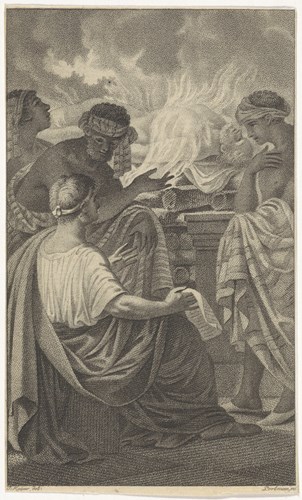The Eleusinian Mysteries reached the apogee of their fame and glory in the Roman period. Roman legions provided peace and security, Roman roads connected the far-flung corners of the empire, and Roman trade facilitated the exchange of goods and the interaction of people from far and wide. Sometime before 19 BCE, while Emperor Augustus was in Athens, the Indian king Porus sent an embassy to him. The ambassadors travelled from the kingdom of Pandya in southern India to Greece with a diplomatic letter in Greek. Augustus and his wife Livia were in Athens to attend an initiation ceremony to the Eleusinian Mysteries. It was not the season, but rules could be flexible when dealing with an emperor at the height of his power. Among the members of the Indian delegation was a gymnosophist (naked philosopher) called Zarmanochegas or Zarmarus.
The monk’s name may represent the Sanskrit S’ramanacharyat, “spiritual teacher” or “leader of a community of monks”. Zarmanochegas attended the initiation ceremony but decided he could not wait for time to take its course. In front of countless onlookers, Zarmanochegas leapt upon a pyre with a laugh, wearing only a loincloth. He had anointed his body, so the flames raged and consumed him in no time. The Roman historian Cassius Dio was unsure whether this act originated in Zarmanochegas’ desire to gain fame or because he desired to demonstrate his beliefs to the Roman Emperor. It is possible that he sought to accomplish the Jainist ideal of freedom from the mortal body and the attainment of moksha (emancipation or enlightenment and liberation). Strabo, on the authority of Nicholas of Damascus, a Jewish historian and philosopher who met the Indians in Antioch, claims that Zarmanochegas immolated himself because his life had been very successful, and he chose to depart before an unexpected calamity should happen to him.

Zarmanochegas burned at the stake, Ludwig Gottlieb Portman, 1802, engraving, Rijksmuseum © Rijksmuseum / Public domain
The Athenians erected a tomb for the Indian philosopher. They inscribed the following on the tombstone: “Here lies Zarmanochegas, an Indian from Bargosa [Bharuch], who immortalised himself following the ancestral customs of Indians”.
As for the embassy, it seems to have been a reasonably pleasant diplomatic success. The Emperor was gratified with the presents brought to him by “eight naked servants, with girdles round their waists, and fragrant with perfumes”. They included a partridge larger than a vulture, a large tortoise, a giant snake, and a boy without shoulders or arms who could use his feet to stretch a bow, shoot missiles, and put a trumpet to his lips. But, unfortunately, the rigours of the journey proved too much for most of the Indians since only three members of the embassy managed to return home alive.





